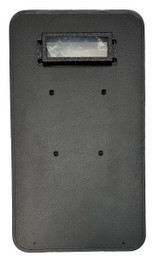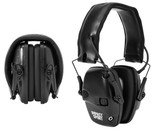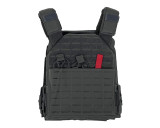Tactical Flashlights & Headlamps
Tactical Flashlights & Headlamps
Seeing the track ahead and quickly acquiring a target at night – what is common between these two? Both require light, of course. And when it comes to choosing a source of light, there are two main options: a tactical flashlight and a headlamp.
There are plenty of tactical flashlights and headlamps on the market to choose from. But which one is better? Should you prefer one over the other? Are there any secrets and definite no-no’s in selecting a particular model?
In this definitive guide 101 we will try to shed light on these questions to help you make your choice easier.
What are tactical flashlights
Tactical flashlights are different from their ordinary counterparts. They are more rigid, sturdier and typically designed to be resistant to weather elements and water. Also, tactical flashlights have power LED light and specific tactical functions that prove to be useful in various situations.
Aside from the obvious purpose of illuminating the surrounding at dark time, flashlights can also be used as a protective device and for self-defense. This stipulates the use of tactical flashlights by military troops, policemen, and guards.
Who needs tactical flashlights
The range of applications of flashlights is wider than you might think. Law enforcement officers and military use tactical flashlights as a part of the standard equipment. But there are other categories of users who may also need a tactical flashlight in a pocket:
- Guards
- Hunters
- Tourists
- Hikers
- Speleologists and cave explorers
- Public utilities workers
- Servicemen
Here is an incomplete list of potential applications of a good tactical flashlight:
Illuminating surroundings
This may seem obvious, but please consider the difference between a simple “civilian” flashlight and a powerful dark-piercing beam produced by a tactical flashlight. The latter is much more efficient in revealing objects and tracks around you. Note that many tactical flashlights come in compact sizes, so you can literally forget one in a pocket and take it out with the dusk.
Needless to say how important it is to have some light in the dark. It is all about safety, after all: to safely follow the chosen path and remain aware of potential threats like thieves or aggressive companies.
Light up in an emergency
Being prepared is being armed. If the power suddenly shuts down, with a tactical flashlight you still can see what’s going on and even fix the problem. Yes, there is a built-in flashlight in your smartphone, but let’s be honest, holding a rectangle shaped device is not nearly as reliable and convenient as holding a rubber covered small tactical flashlight. And the tactical flashlight is much brighter too. So you can light up the underhood of your car, or safely navigate to your home or whatever else, while saving your phone battery for emergency calls.
Self-defense
The great light output makes a tactical flashlight an excellent non lethal and non traumatic weapon of a kind. Point the light spot to the face of an intruder or attacker to disorient them, and win a few seconds to counterattack or escape to call for help. Sometimes, the bright light itself may be enough to make the potential aggressor flee. Also, the stainless steel casing of a flashlight is typically hard enough to use it as a blunt weapon if the situation becomes desperate and life threatening.
How to choose a good tactical flashlight
With abundance of tactical flashlights on the market, it may be hard to pick a particular model. Here are the main criteria you can follow when choosing your tactical flashlight to end up with a really good tactical flashlight device.
Adhere to standards
When you are looking for tactical flashlights you should pick from those that comply to the ANSI FL1 standard. This standard sets requirements to flashlights that are sold as tactical шт terms of minimum beam distance, standard runtime, light output, peak beam intensity and other parameters. Some manufacturers explicitly say they are working within the ANSI FL1, others do not. Selecting those that adhere to the standard guarantees you will receive a good product.
Light output and intensity of light
The light output of a flashlight is measured in lumen. The more lumen you see in the specifications, the brighter the flashlight is and the more light output it produces. A good tactical light has 700 to 1000 lumens, and some most advanced ones can deliver even 2000 lumens which is quite impressive.
However, high output means the battery probably won’t last long, so if a tactical flashlight offers variable light output you should prefer this model.
Light temperature
This term means the color spectrum of the light beam. Human eye percepts some light as warm and other as cold. Warm light is light in the lower part of the spectrum, nearly 2700-3000K. Cold light resides on the upper part of the spectrum with 6000-9000K temperature. Neutral light near 5000K temperature is something in between.
Warm lighting is good to create a relaxing environment. It is conceived as less bright, though, because such spectrum is associated with sun dawn.
Neutral light provides maximum details and allows our eyes to percept more natural colors because neutral light is close to natural spectrum of the sunlight where neither warm nor cold colors prevail.
Cold light seems lighter and more dark-piercing, but it affects our color perception due to large portion of blue in its spectrum, so it is not recommended for tasks related to manufacturing, painting and other works that require attention to details.
Depending on your goal, you may prefer cold, warm or neutral temperature. If you are not sure, contact the specialist.
Beam distance and beam type
A tactical flashlight has two important and very easy to comprehend characteristics: the beam distance and the beam type that are related to each other.
The beam types define how the light beams from the flashlight propagate, what area they illuminate, and how. The common beam types are:
- Flood. The flashlight spreads the light to wider area, but at shorter beam distance. The light “floods” the area and allow you to see more surroundings at short distances.
- Spot. The flashlight is more focused and only illuminates a smaller spot, but at longer distance.
The flood beam light is better when you need to control the area around you, and the spot beam shines when you need to work at the long range. Often, tactical flashlight combines both types of beams that you can switch between or even turn on simultaneously.
Durability
The durability of a tactical flashlight depends on the material its case is made from. Normally, you should prefer stainless steel, anodized aluminum or titanium cases over plastic ones. The metal can easily absorb damage, so you won’t break your flashlight if you drop it on a hard surface like concrete floor.
Also, high durability of the flashlight allows you to use it as a weapon.
Waterproof
Tactical flashlights are either water resistant or waterproof, so you should only look at models that offer one of that.
Specifically, there are several levels of water resistance, called the IPX rating. Typical ratings for tactical flashlights are:
- IPX4 means the flashlight can be used in the rain and does not fear drops and splashes of water.
- IPX5 protects from streams at low pressure.
- IPX6 protects from streams of higher pressures send from any angle.
- IPX7 rating means the flashlight can survive submerging underwater for no more than 30 minutes and no deeper than 1 meter.
- IPX8 guarantees that a flashlight can survive full submerging deep underwater for a few hours. Effectively, this means you can use the flashlight underwater without limitations.
Size and weight
Many tactical flashlights come in a compact size, so you can easily find a free pocket or a tactical webbing to put the flashlight to. But with the size comes the power, so if you want more light output you probably will have to pick from larger flashlights.
Thanks to contemporary materials, current flashlight models are low-weight, so this is rarely an issue.
Light source type
All modern tactical flashlights are equipped with an LED light source which is both powerful and consumes low energy. But some older models may still be equipped with less advanced light sources, so you should pay attention to this when purchasing a tactical flashlight.
Light modes
Tactical flashlights have special light modes that allow you to send signals in specific situations or use the flashlight to disorient the enemy.
Here are some:
- Constant light. This is your basic lighting mode to illuminate the area or the object of interest.
- Strobe light. Quickly blinking bright light can easily disorient , so this light mode is extensively used by Spec Ops and law enforcement officers during force entries and police missions.
- Beacon light. This mode allows you to enable a beacon – a periodical signal that lets other know where you are. This can be life saving in certain situations.
- SOS light. This special light mode sends the SOS light signal.
Weapon mount
Holding a flashlight occupies your hand, which may be inconvenient in some situations, especially during an armed encounter. An ability to mount a tactical flashlight on your weapon frees up your hands and allows you to be more efficient.
What are headlamps
A headlamp is a type of flashlight that is equipped with straps to put it on your head. The advantages of such a solution are clear: you can free your hands for equipment, weapons, or to help yourself while following the trail during hiking, climbing or cave exploring. Managing your gear on the way is also easier when your both hands are available.
Another big advantage of tactical headlamps that made them popular among both hikers and law enforcement officers is the directional light that straightforwardly follows your sight. Put this simply: the headlamp illuminates the place you look at right now. This is extremely convenient as it helps you to avoid various hazards such as rocks, obstacles, landslip seams and cracks, or attacking enemies in low visibility conditions.
Who needs tactical headlamps
Thanks to versatility of a tactical headlamp, many people choose to have it in their arsenal or backpack. Here are some:
- Hikers
- Tourists
- Law enforcement officers
- Cave explorers and diggers
- Policemen
- Servicemen
- Cyclists
- Technicians
In fact, everyone may occasionally need a headlamp in such situations as a power outage, car breakdown, or just to go for a walk with a dog when the street lights are off.
How to choose a good tactical headlamp
Selecting a tactical headlamp is somewhat similar to picking a good flashlight, because this is what it is, a flashlight placed on your head. So the key principles remain the same.
Light output
While the headlamps typically produce less powerful light beam, you still need to pay attention to this characteristic. A good headlamp can deliver light output of 300-500 lumens which is enough for many scenarios. Sometimes, you may prefer more or less powerful light sources. For instance, if you are to follow an unknown trail, you better look for more light output to illuminate your way better.
Light temperature
Warm or neutral light seems more pleasant to the eye, and allows seeing more details in more accurate colors, so we recommend looking for head lamps with light sources of no more than 5400K temperature.
Beam type
This parameter is even more important for headlamps, because of the tunnel vision effect. Here is the deal. When the spot beam penetrates the dark and illuminates an area before you, your eyes adapt to the brightness and the pupils get narrower. This results in a side effect: now, everything beyond the light cone look even darker for you than it really is.
Such partial blindness can be dangerous in some situations, so you should prefer tactical headlamps with either the flood beam type or the combined one.
Power source
Currently, headlamps come with either replaceable batteries or rechargeable ones. In practice, you can choose the type that is more convenient to you, but rechargeable tactical headlamps may be better provided the abundance of mobile charging devices on the market.
Waterproof
If you plan to dive with your headlamp on, look for IPX8 models. Otherwise, IPX4 or above is well beyond imagination to prevent water from getting into your headlamp and turning it off.
Durability
This is especially important for tactical headlamps, because you never know what you will face on your trail (sometimes literally). A rugged headlight can survive hits, damages and sudden drops and remain functional.
To ensure good durability and long life of a tactical headlamp, look for steel, carbon or titanium models. Although, hard plastics are also common in this niche, so do not neglect such models if you do not plane to break ceilings with your head.
Rotation
Some models of headlamps offer additional capability to rotate the lighting bulb up to 90 degrees. This is can be extremely convenient to direct the light beam exactly where you need it without turning your head back and forth (or left and right).
Straps
Ok, you will be holding this device on your head, probably for hours. Needless to day, you want the strap as comfortable as possible. Make sure to select a model with soft and adjustable elastic straps, additional soft pads to fit it comfortably on your head.
Tactical flashlight VS. tactical headlamp. What to choose?
Ok, now that you know nearly everything about both types of the light, let’s summarize the knowledge and try to figure out pros and cons of each solution in each particular situation.
Flashlight advantages
- You can use it in many situations, when additional lighting is required
- The rugged case allows using the tactical flashlight for self defense
- You can mount it on a weapon
- Typically, flashlights provide better light beam angle and thus allow wider illuminated field of view in the dark
- They are also more powerful and illuminate longer distances
Flashlight disadvantages
- Occupies one hand unless mounted on a weapon
- You may suddenly let it drop and lose the light source. Also, others can take it from you relatively easily.
Headlamp advantages
- You can use it hands-free. This is crucial on a mountain trail or during a special law enforcement mission.
- The light beam follows you sight. You just turn your head and illuminate what you are looking at.
- Lightweight. Even compared to flashlights, tactical headlamps are lightweight and do not occupy much space in your backpack.
- Versatility. Yes, it is meant to be placed on your head, but hey, you still can use it like a normal flashlight.
Headlamp disadvantages
- Lower brightness. Smaller size and a less powerful battery mean you see less compared to a flashlight.
- Tunnel vision effect. You barely can see what’s going on beyond the light cone of the headlamp. This can be dangerous.
- Hard to use in a group. When there are several people in a group all wearing tactical headlamp, it is hard to avoid blinding each other occasionally.
Recent Posts
-
Understanding Ballistic Shield Ratings and Their Applications
The Trusted Name in Tactical Defense - BattleSteel® When it comes to protecting those who protect us …2025-04-19 -
The Importance of Hearing Protection in Tactical Environments
The Legacy of BattleSteel® BattleSteel® is a trusted name in the world of tactical defense equipment …2025-04-14 -
How to Properly Fit and Wear a Plate Carrier
About BattleSteel and Their Mission BattleSteel is a trusted name in the tactical gear industry, ren …2025-04-11


